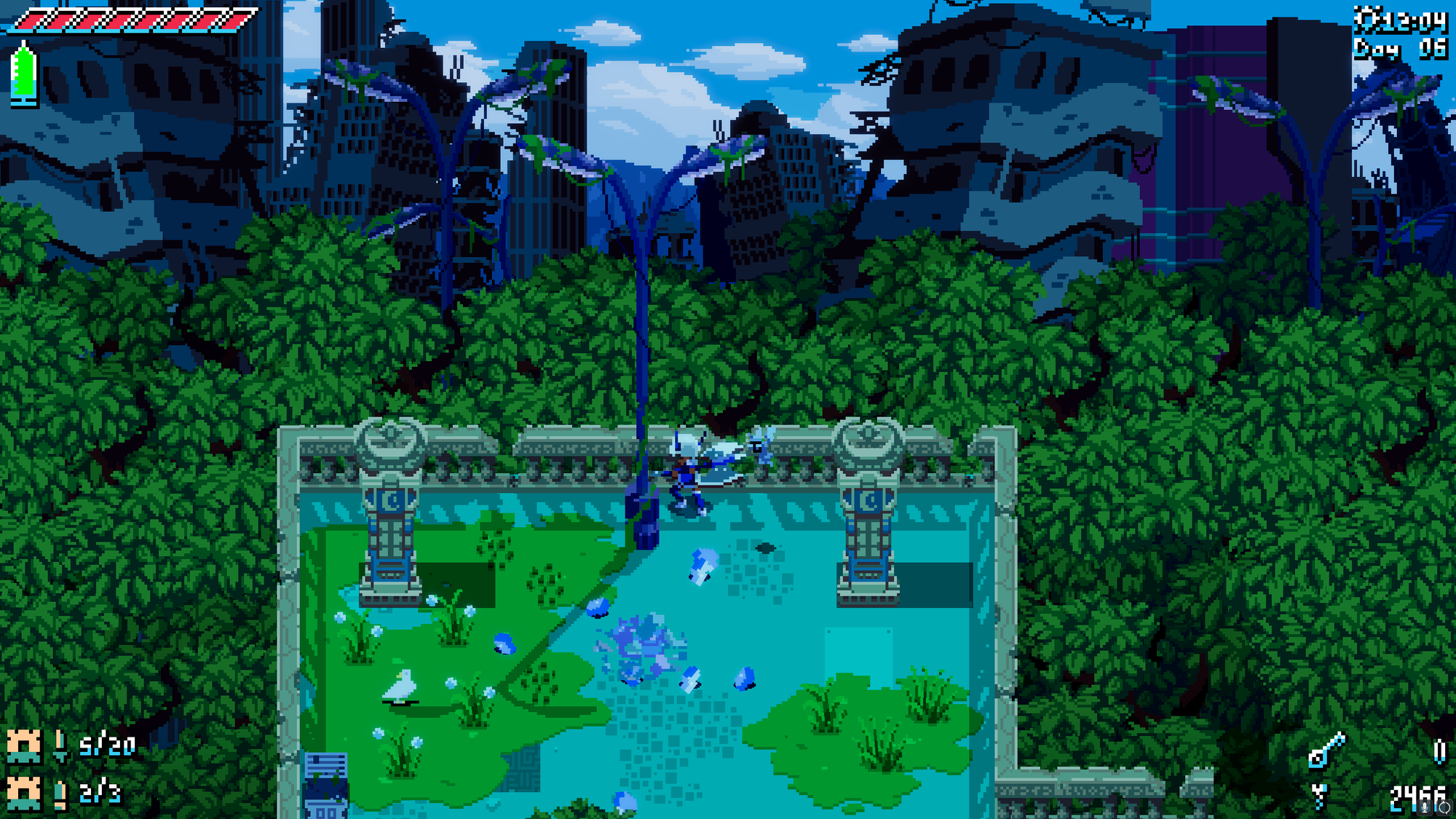
Yes, that is a pun about robots... No, I'm not sorry.
Unsighted is a game that's flown under the radar amidst a deluge of promising indie titles and a few big releases from major studios (yeah, yeah, I admit it; I finished Metroid: Dread before circling back to Unsighted).
But it's a game I'm incredibly glad I didn't miss. I had a hard time writing out my thoughts here, but it's not often that I play something that I feel such a compulsion to talk about. Sure, it's impressive as a metroidvania and as an action game. But what's interesting about it is how it underscores its storytelling with bold mechanical ideas, and feels fresh and innovative in a genre saturated by indie darlings.
Setting the Scene
Unsighted opens following Alma, an amnesiac combat automaton who wakes up disoriented in a ruined lab. After the introductory section of the game, she meets her old companions, who explain the overarching story of the world. When a mysterious meteor struck the planet, an enigmatic energy called "anima" began to radiate off of it. Automatons that were created by humans to perform various sorts of labor began to develop sentience as they absorbed the anima. A war broke out as the automatons fled their masters and formed their own communities. But the humans have created a device to siphon anima from the meteor. Now, the automatons in the city have only their remaining anima reserves to keep them going.
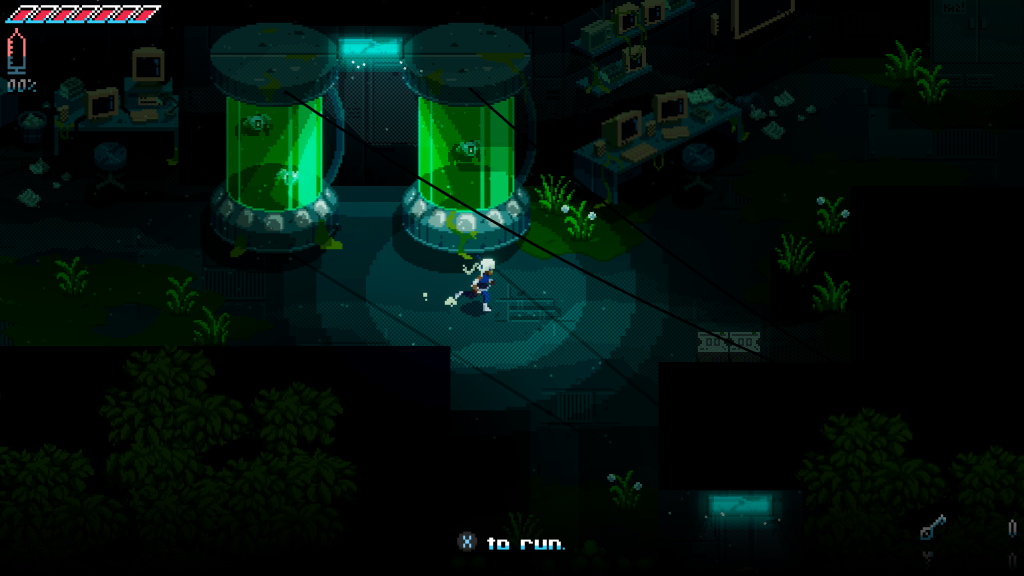
When an automaton exhausts their supply of anima, they go "unsighted", becoming hostile and unthinking, losing their sense of self, like a rabid animal. With the flow of anima obstructed, every character that the player meets, including Alma herself, is running out of time.
As the world opens up and can be explored freely, the clock starts ticking on Alma and everyone she encounters. Every character she interacts with will display a number of (in-game) hours remaining before their anima is depleted and they go unsighted. Eventually, Alma will begin to find meteor dust that modestly extend a characters' time. But there won't be enough, and she may even need to save some for herself. Unless you're speedrunning, you simply can't save everyone.
A Shift in Perspective
But whether you're speedrunning or exploring the world for the first time, UNSIGHTED is a masterclass in metroidvania-style design. Its world is filled with shortcuts, back doors, and myriad opportunities to sequence break (it even displays a congratulatory achievement popup if you do so early on). Some might debate whether a top-down game "counts" as part of the genre, or whether some other classification is more apt; I'm not sure it's worth the effort. But it is worth discussing Unsighted as a metroidvania if only because of it's spectacular world and level design, and the ways in which it's informed by a metroidvania design ethos.
The metroidvania format is popular for good reason. It takes a big, branching map and layers it with numerous routes, guided by obstacles and new abilities, occasionally branching further where sequence breaks are viable. These routes often function like linear sequences of their own, but can be discovered organically as players explore their options. As the route they take unfurls, it provides the player with a sense of exploration and discovery, but relinquishes just enough control to the developers to allow them to build cohesive segments of the experience that would be impossible in a truly open world.
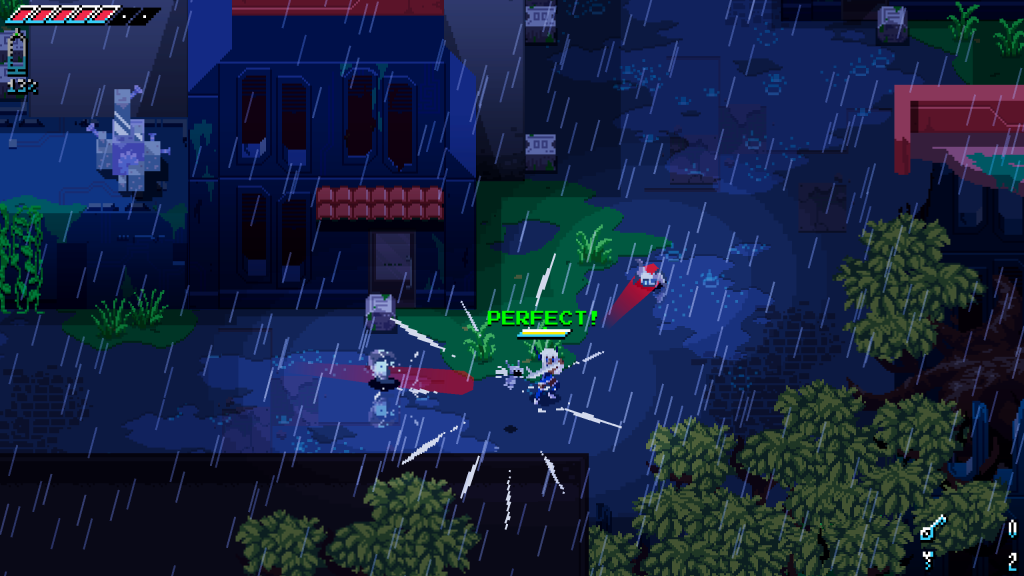
Combat (parrying in particular) is also pretty satisfying
Unsighted's map design, both in the overworld areas and the more dungeon-like spaces, have been constructed with incredible precision and skill. Find new save points and opening shortcuts to previous areas (especially when time is of the essence) is always satisfying. The world is dense and elaborate; no section of the map feels extraneous. But it's also easy enough to parse. The game provides an uncomplicated pin system to mark points of interest to revisit later, and there are nearly always reasonable ways to return to them.
At its best, Unsighted falls into a rhythm of exploration, discovery, new abilities, and escalating combat challenges that stands shoulder to shoulder with the heights of the genre. The urgency to move forward becomes almost a flow state, and the guardrails are just sturdy enough to be helpful while remaining mostly out of sight.
Running Out of Time
But regardless of the joy of exploration, the rhythm is crucial to maintain. Unsighted reminds players frequently that there may not be time to stop and smell the flowers. The game is kind enough to present a warning up front; it invites players to consider a more forgiving "explorer mode" with much longer timers. You can even disable the timers outright, if they feel too stressful or constraining. But it's also clear that the developers hope for players to experience the tension of playing with the timers on. Even in the act of offering players a way out, the game is asking implicitly, gently, to decline. It hopes you'll buy into the ticking clock as a part of the world, that you'll let it be part of the mechanical reality of the experience.
And even when played with the default settings, the timers don't start running low for a while. It was pretty easy to progress through a reasonable chunk of the game before characters started to drop into single-digit hours, and I needed to start somberly allocating my meteor dust. But it did happen, and as more characters' timers became low enough to need attention, I started running out of the stuff.
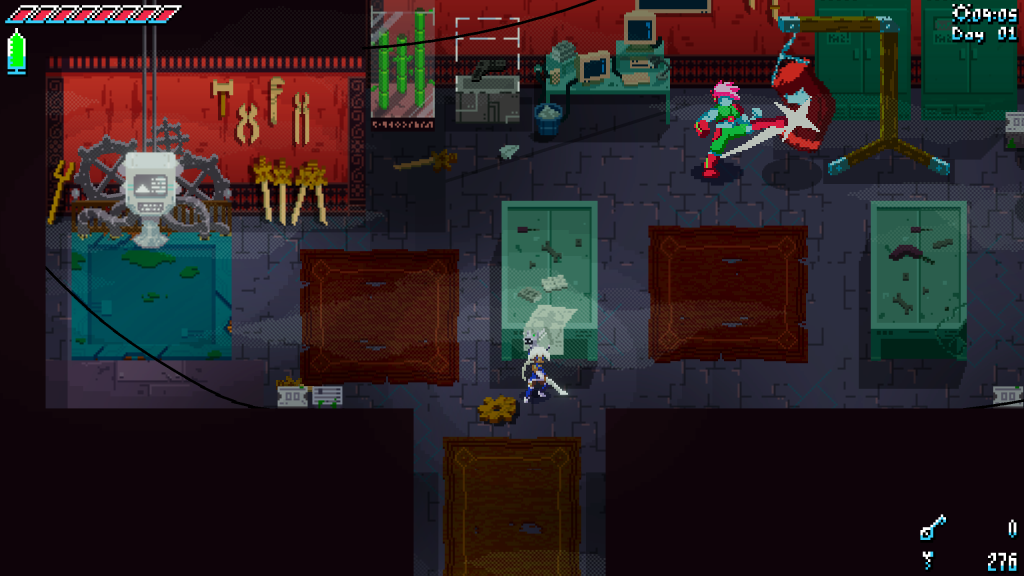
I didn't spend much time in the village, but I cherished what time I did spend
As Alma came ever closer to saving her community from oblivion, she had no choice but to lose people along the way. Unsighted allows characters, even important ones, to simply fade away. It's a stark and tragic, and it mirrors the unrelenting loss that plagues marginalized communities who are fighting for their rights and safety every day.
Loss and Hope
There's no shortage of queer allegory in the characters and storytelling of Unsighted. Androids or automatons are often stand-ins for marginalized people and communities, so the metaphor is not unfamiliar. But Unsighted commits to this more deeply than other games often do. Not only because both of its developers are trans women, but also because the character work and mechanical design expresses similar values. The automatons are more than just an oppressed people; they're unique and diverse, and not in a token way. Crucial to being an automaton is the ability to shape one's physical body to match their identity, and this metaphor is wielded often and unambiguously.
Throughout the game, Alma meets automatons with dramatically varied bodies: ones who use wheelchairs or pilot mechs, ones with all sorts of "skin" colors, even some who are entirely nonhumanoid. Nearly every character is distinct in their design alone, varying dramatically in size and shape but always unified by the vibrant pixelated visual style.
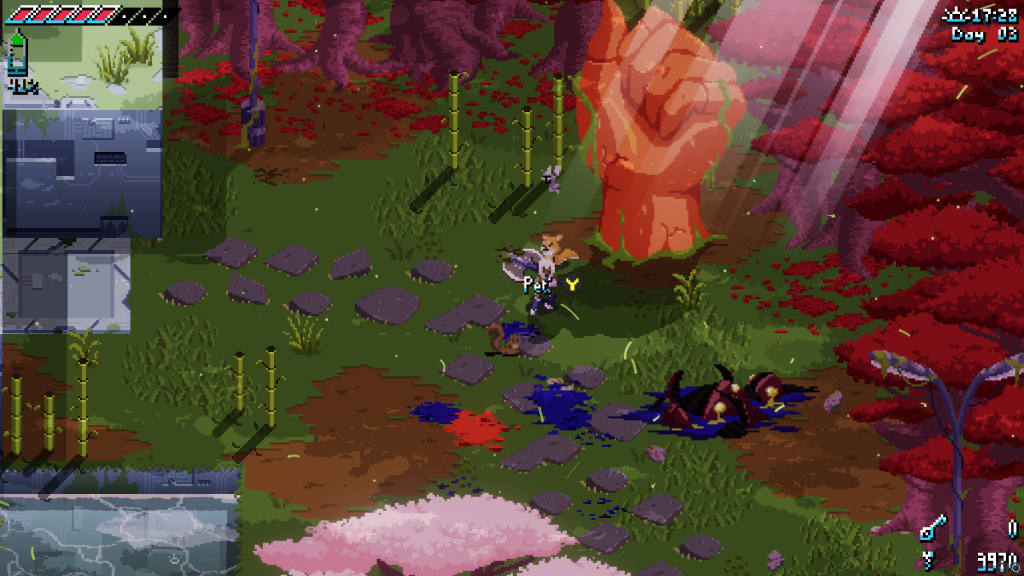
Can you pet the dog? Of course you can!
Admittedly, some of the dialogue writing is utilitarian. And when it reaches for more poignancy it often fumbles or comes out a little awkward. But the dialogue often feels supplemental to what the art and mechanics are communicating. Regardless of what characters say, it's always evident how they fit into the community, and what it might mean for them to fade away. And as they grapple with this impending doom, the fear, despondency, and hope that they experience rings true even when the actual writing is flat.
Unsighted's world and circumstances are bleak and urgent. But it often contradicts this in its presentation, portraying the various corners of the ruined city in vibrant, saturated colors and scoring it with a soundtrack that veers between genres, layered with melancholy, tension, and perseverance. This is the contrast that Alma inhabits as she struggles to save everyone she loves, and secure a future for her community. And it's what makes Unsighted shine so much despite its blemishes.